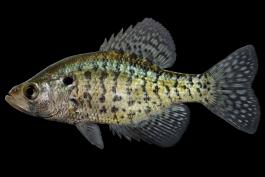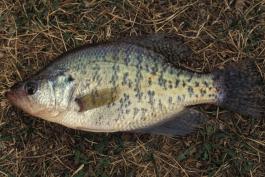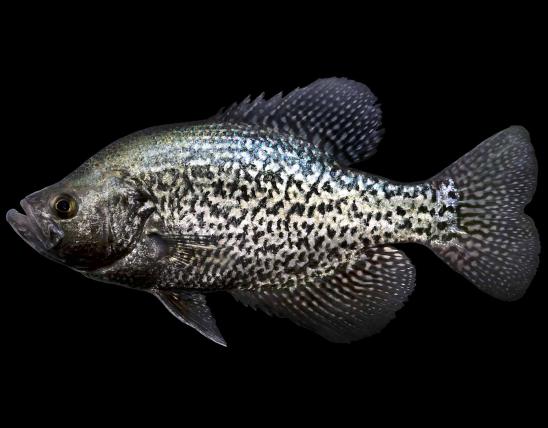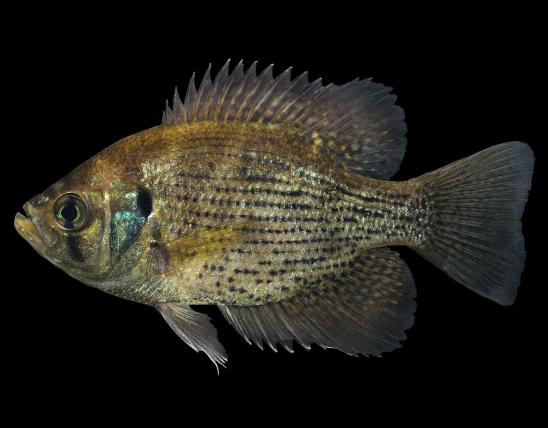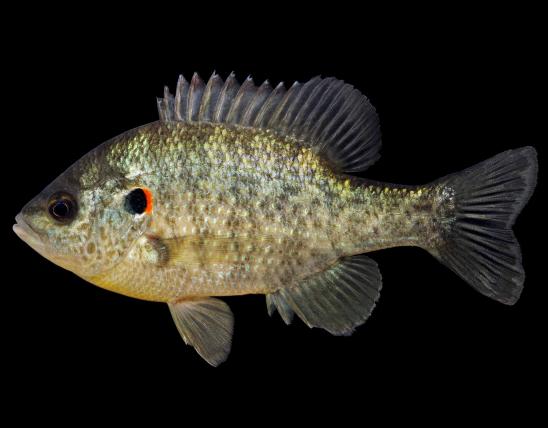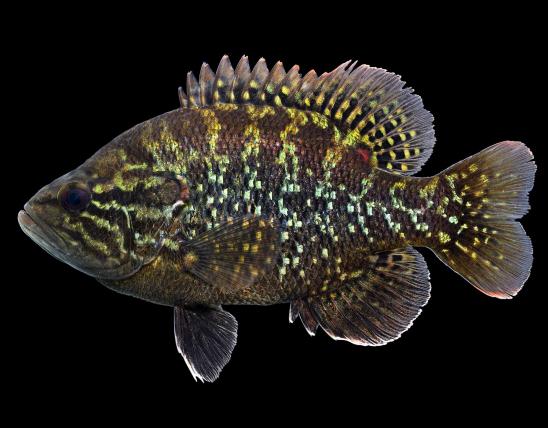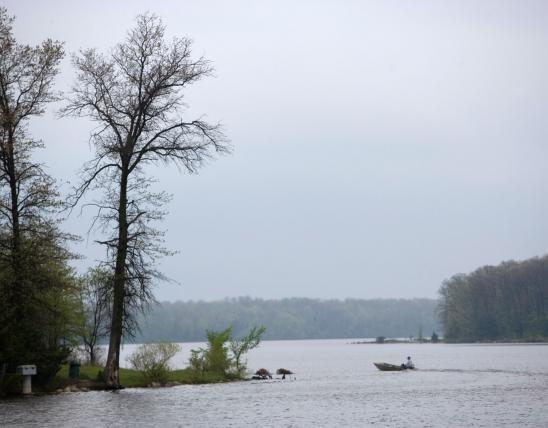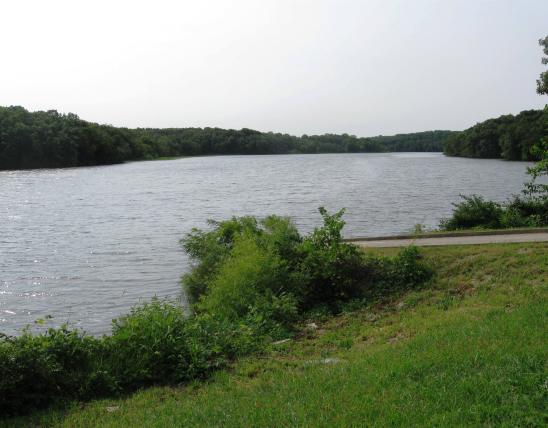
The white crappie is deep bodied and strongly compressed laterally (slab-sided). The upper jaw is long, reaching well past the middle of eye. The two sections of the dorsal fin (spiny forepart and soft-rayed rear part) are broadly connected, without a notch between. The anal fin is nearly as long and as large as the dorsal fin, and has 6 spines. The upper surface of the head and forward part of the back are strongly concave.
White crappie are distinguished from black crappie by the silver coloration, with 5 to 10 often faint, dark, regularly arranged vertical bars. The dorsal fin usually has 6 spines.
Similar species: Black crappie have irregularly arranged speckles and blotches instead of faint vertical bars as the color pattern. They also have 7 or 8 dorsal fin spines instead of 6.
Total length: usually 9–10 inches, seldom exceeding 15 inches; weight: usually about 2 pounds, seldom exceeding 4 pounds.

Nearly statewide, but rare or absent from many streams of central Ozarks and northwest part of prairie region.
Habitat and Conservation
Open water in or near submerged timber or other suitable cover in ponds, lakes, reservoirs, and slow-flowing backwaters of large rivers. Near vegetation and submerged woody structure in shallow water during spawning period. Most active in evening and nighttime but can be seen during all times of the day.
Food
Primarily small fish such as minnows and young shad; also aquatic insects and small crustaceans.
Status
In large Missouri impoundments and natural lowland lakes, the white crappie is one of the most important fishes in the creel. In our state, it's more abundant and widespread than the black crappie.
Life Cycle
In Missouri, crappie (both white crappie and black crappie) spawn from about mid-April to early June, when water temperatures exceed 56 F. They spawn in coves protected from wave action and require silt-free substrates. White crappie nest in colonies in or near plant growth if available. As many as 35 nests have been reported in one colony. In suitable waters, natural reproduction of crappies may be considerable. Individuals usually live no more than 3 or 4 years, but occasionally they can live 8 years or more.
Human Connections
Because it reaches a fairly large size and is readily caught, white crappie ranks as one of the most popular panfishes in Missouri. Still-fishing or slow trolling with small minnows near submerged trees or other cover is one of the most effective fishing methods.
Ecosystem Connections
The sunfish family (Centrarchidae), which includes black basses, rock basses, bluegill, and crappie, are relatively large, slab-sided predatory fish with spiny-rayed fins. They are often rather sedentary and territorial, and they do not form schools except, perhaps, when very young.
If you've ever kept a tropical aquarium, you might see a lot of similarity with the group of tropical fish called cichlids (in the family Cichlidae). Some cichlids popular in the aquarium trade include Oscars, tilapia, angelfish, discus, and many more. Cichlids and centrarchids are not closely related; they are in different orders and have some very distinct physical characters not easily visible to an untrained eye; DNA evidence confirms their quite separate lineages. Cichlids are found in the Southern Hemisphere and in addition to their similar body types, perform much the same ecological roles as centrarchids do in North America. The two families are biological analogues in different parts of the globe.



